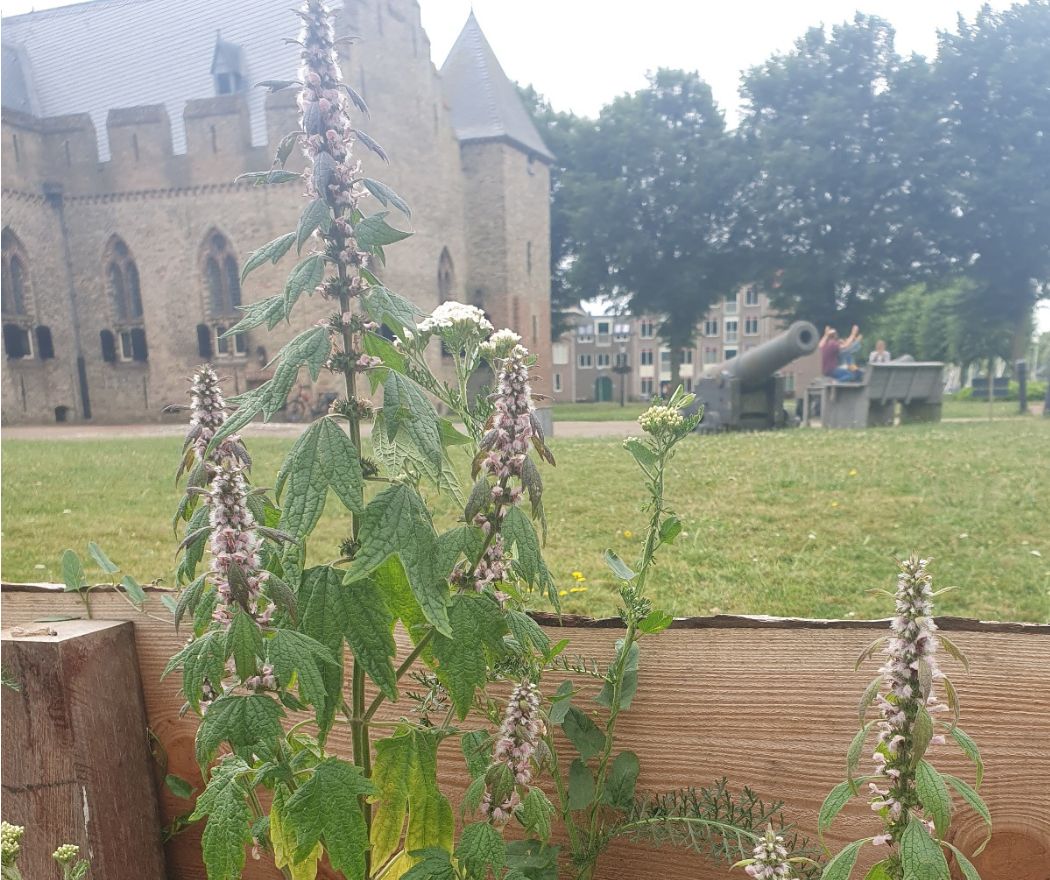Medieval Herb Garden
In the Middle Ages, castles and monasteries had large herb gardens. These were used not only for cooking, but also for medicinal purposes. Below is more information about the herbs in our garden and what they were used for in the past, and sometimes still are today.
Note: absolutely do not experiment yourself based on the information below!
Are you looking for Violet-Shrinking and Billie Bee? They are here in the Herb Grove >>
Saskia tells you all about .
Yarrow
Marigold
Sage
St. John's wort
Comfrey
The herbs by alphabet
Lemon mint
ARTEMISIA ABROTANUM
Lemon grass is from the same family as Absinthe, from which people in ancient times distilled a popular drink. Other plants in this family are mugwort and Artemisia annua (mugwort), all very medicinal plants. The leaves of the plant are enormously bitter. In the Middle Ages, they were used to add flavor to fatty dishes. Nowadays, lemon grass is also called "coca cola bush," because it smells and tastes like cola.
Lemon grass strengthens the stomach and is good for digestion. It promotes menstruation and expels worms. Put on gin, lemon herb helps against headaches.
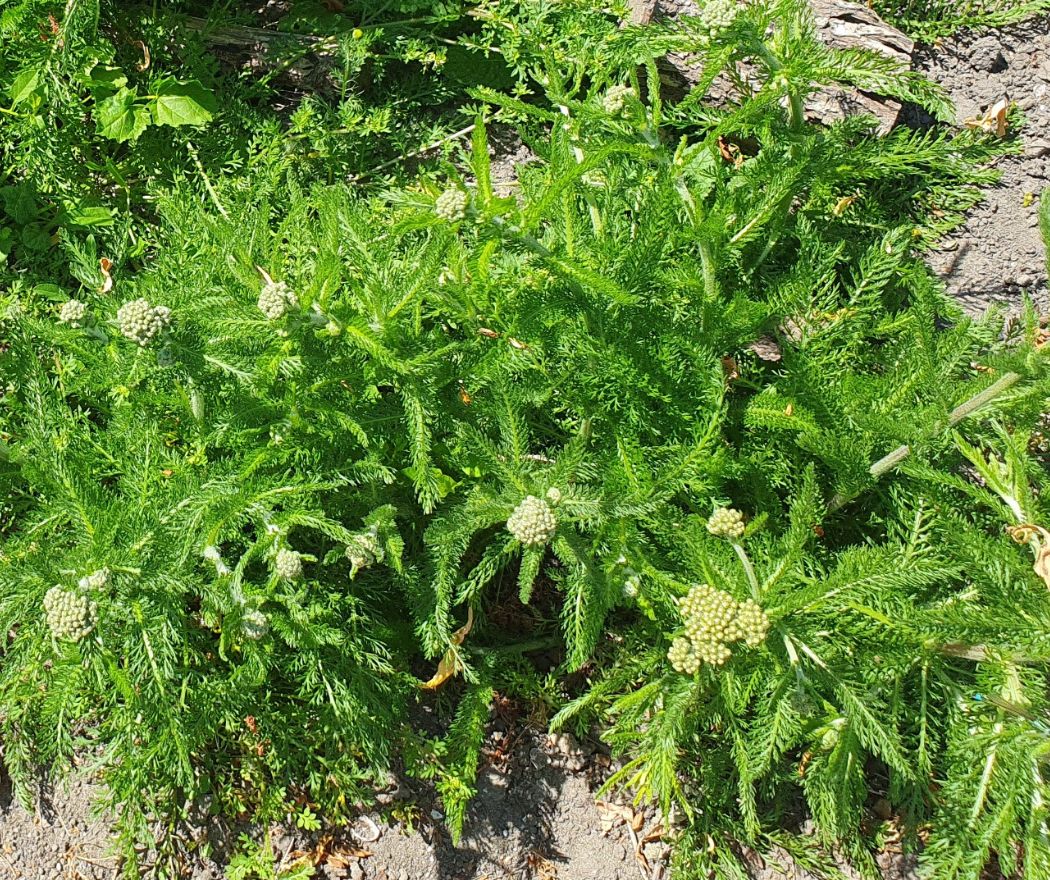
Yarrow
ACHILLEA MILLEFOLIUM
There are many species of yarrow, but the Achillea millefolium is traditionally the most commonly used. 'Achillea' refers to the Greek general Achilles, because it helped his soldiers to stem bleeding wounds. Yarrow is known by many different names, including dogwort, duust and tobacco flower.
Yarrow is thus blood healing, but in the Middle Ages people were convinced that you could also use it to scare away evil spirits and witches. For example, through smoke, or hanging or wearing an amulet with yarrow. In Chinese culture, it was also used when consulting the I Ching.
Source: Natuurdrogisterij Van der Pigge
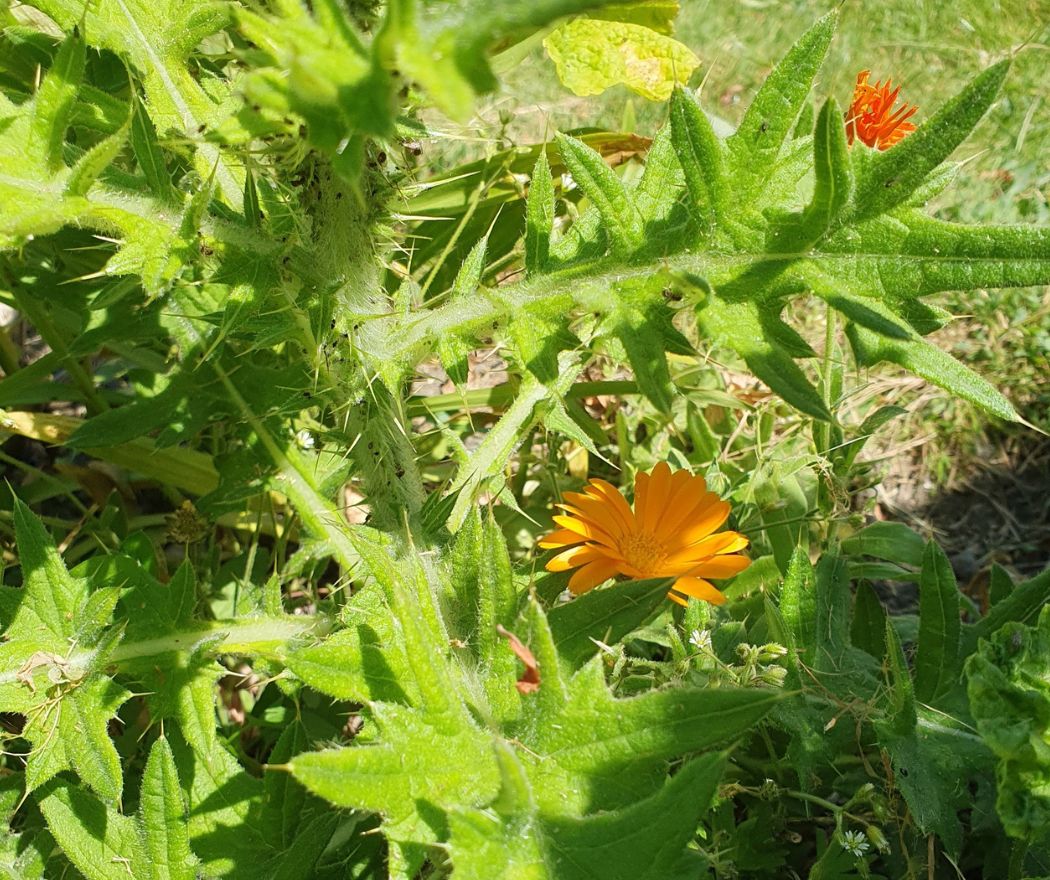
Marigold
CALENDULA OFFICINALIS
Marigold is still widely used in medicinal ointments and creams today, as it was in the past. Only you probably know it better by its Latin name "Calendula. That means "little clock/calendula. This is because the flowers of the marigold close when it gets dark, and the plant often blooms at the beginning of a new moon.
Marigold works on the skin. Calendula ointment is anti-inflammatory and promotes healing.
Hartgespan
LEONURUS CARDIACA
Writings show that hartgespan was used for a very long time at least in Greece and China. Heart Spank helps with high blood pressure and gives calmness to palpitations. For women, it was used for rest during childbirth and for menstrual delays.
In modern Western medicine, hartgespan is not used because one cannot really find which substances from the plant give the active effect.
If you look more broadly, everything indicates that heart tension works in the energetic field. So when it is used now it is in the form of a flower remedy. That way you can get the energetic value of the plant in a bottle. Heart spasm helps against the feeling of being "the ugly duckling" and not belonging.
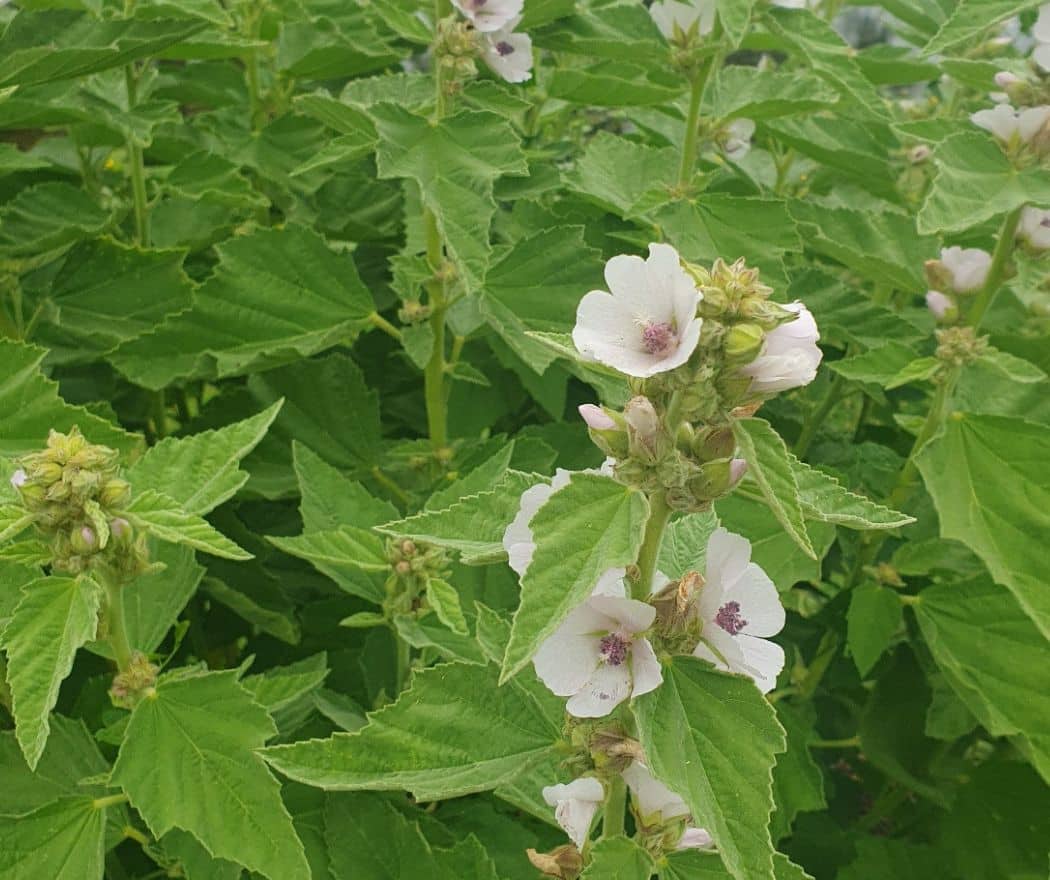
Heemst
ALTHAEA OFFICINALIS
Holly has been used for tens of thousands of years. We know this because pollen grains of true holly were found in a 60,000-year-old tomb in Iraq. It was also used as medicine in ancient Egypt, as it was with the ancient Greeks and Romans. Starting in the Middle Ages, children who were molting were given a piece of holly root to chew on, and it was used against inflamed gums. That's where the name "tooth root" comes from.
Furthermore, heemst is good for your airways. It helps against bronchitis and all types of coughs. The mucilages in the plant neutralize stomach acid and protect the mucous membranes of the stomach and intestines. Therefore, holly is used as a remedy for inflammation of these mucous membranes, heartburn and gastrointestinal ulcers. It also helps against adult-onset diabetes. Rinsing with a decoction of heemst works against ulcers, gum and tonsillitis and other oral problems.
Externally, holly can be used for many different skin conditions. From boils and abscesses to minor injuries, rashes and insect bites.
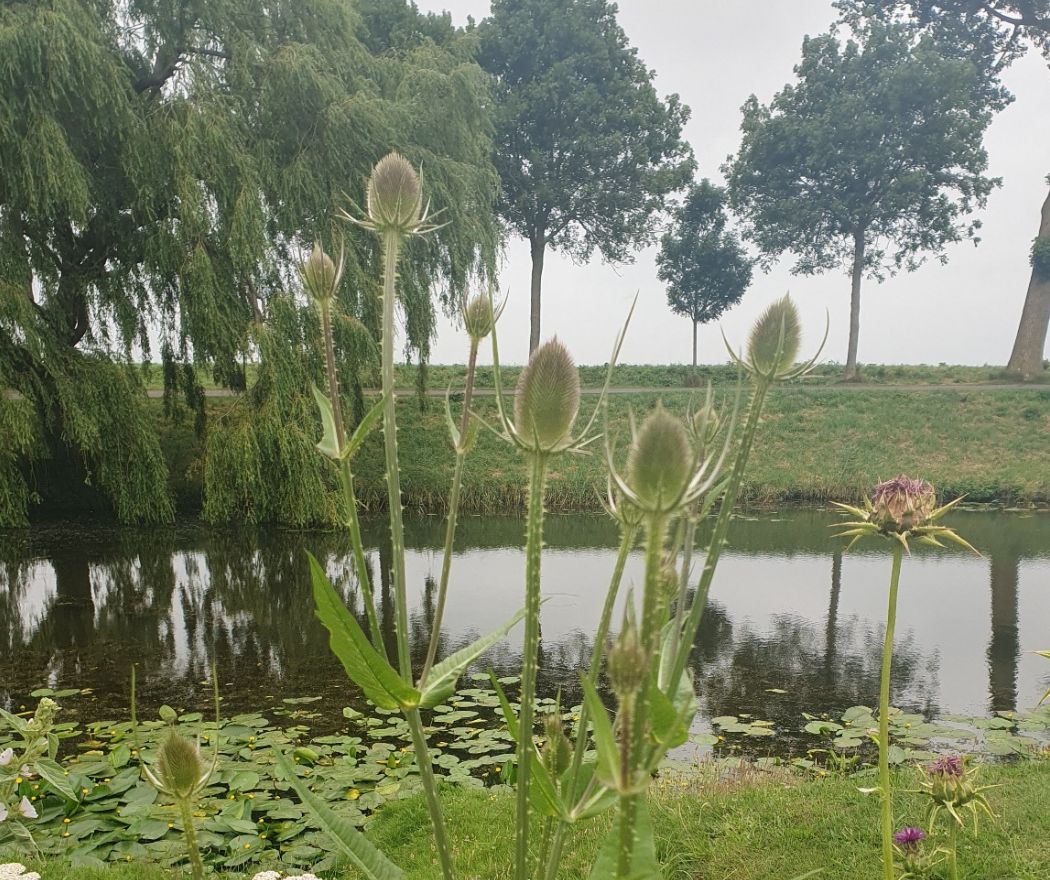
Dandelion
DIPSACUS SYLVESTRIS
Also: Dipsacus fullonum. Dandelion is used as support for Lyme disease. It does not kill the bacteria that cause Lyme, but it does help against its symptoms.
Furthermore, the herb is used for joint complaints in general. Dandelion strengthens the immune system and specifically tendons, bones and connective tissue.
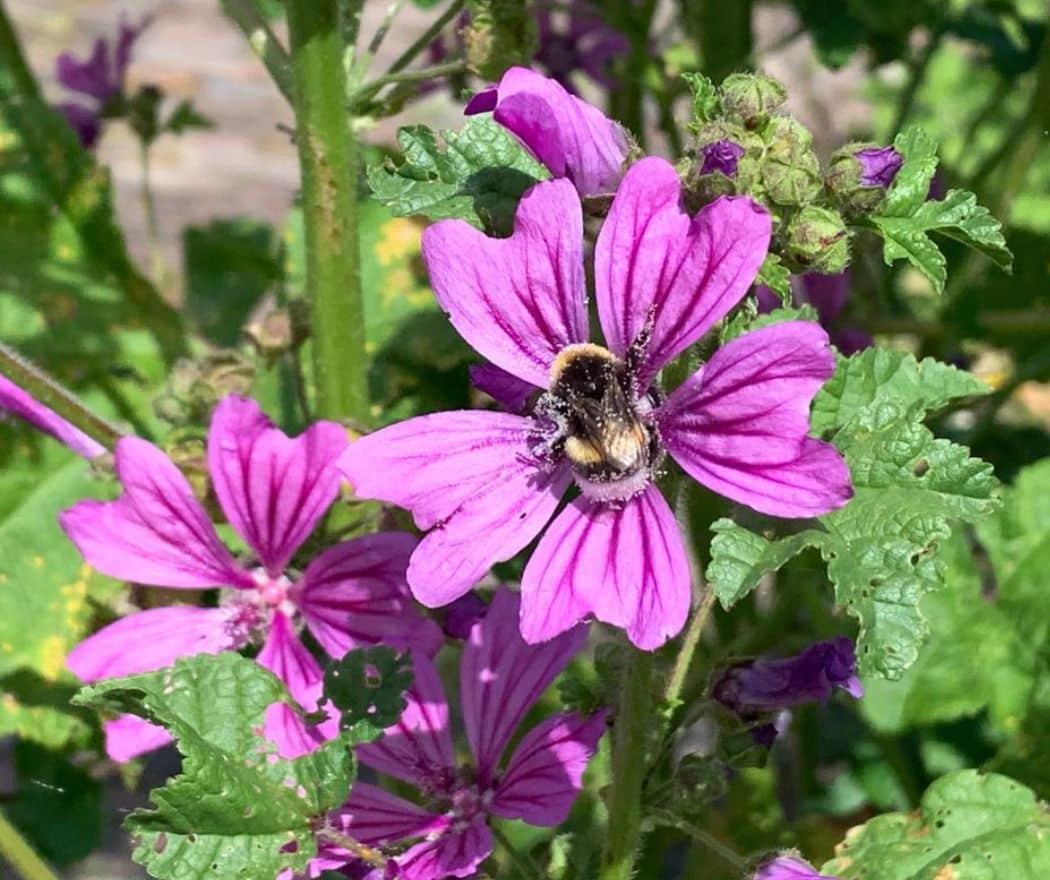
Caithness
MALVA VULGARIS
The flowers, leaves and stems of cheesy herb contain tannins and mucilages. These work to soothe and heal inflammation of the mucous membranes. It works best when processed fresh, although it can also be used dried.
Tea of cheesy herb is used internally for mucosal infections in the mouth, throat, stomach, intestines and bladder and for bronchitis. Externally, the herb is good against skin irritations and allergies, and for wounds and sores. Eye compresses with cheesy herb work well for lack of tear fluid.
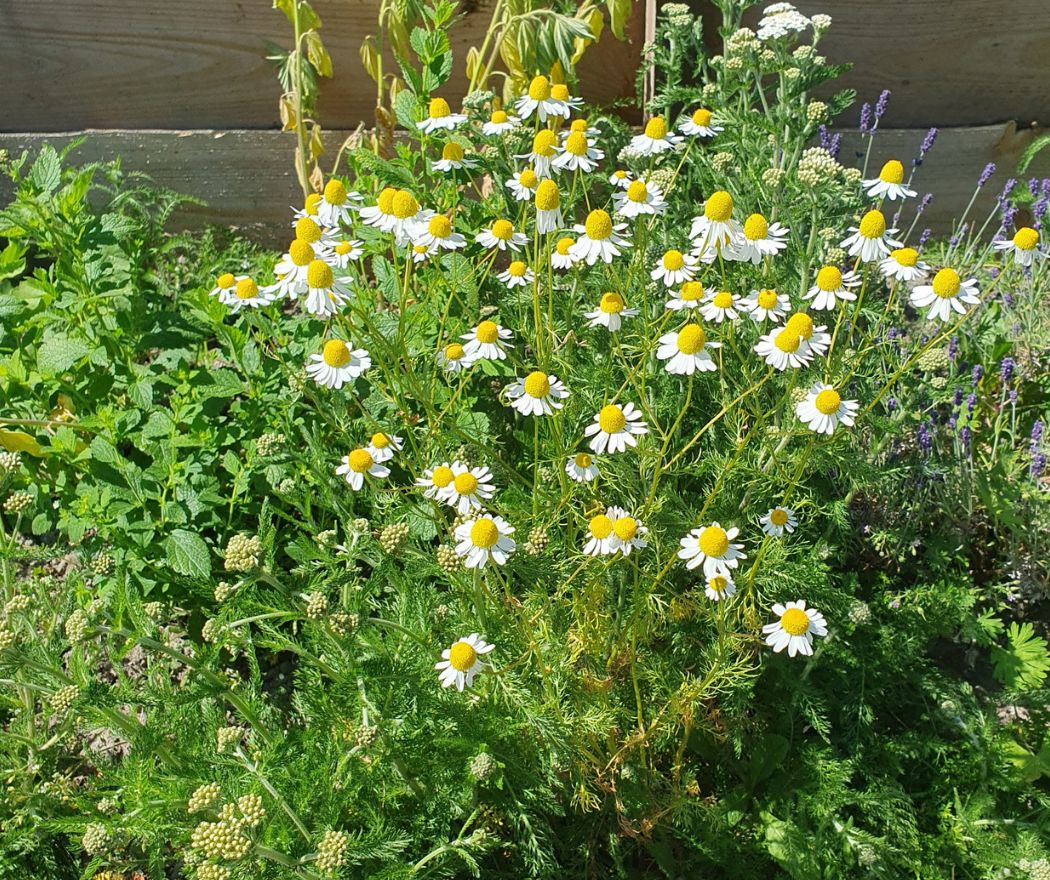
Chamomile
MATRICARIA CHAMOMILLA
Matricaria is derived from the Latin word for mother (mater). This is because chamomile was widely used by mothers, both for sick children and for (menstrual) cramps. For best effect, chamomile should be harvested in full afternoon sun.
It is multifunctional: as a tea, it soothes fever, cramps and abdominal pain; externally, it is anti-inflammatory and antiseptic. Chamomile can therefore be used well for rashes, flatulence and diarrhea and is cleansing and sweat inducing (sweating out the fever).
The aroma calms and helps against insomnia and nervousness. Adding the flowers to a steam bath helps with various complaints: it helps you sleep soundly, and colds, sinus infections and rashes are soothed.
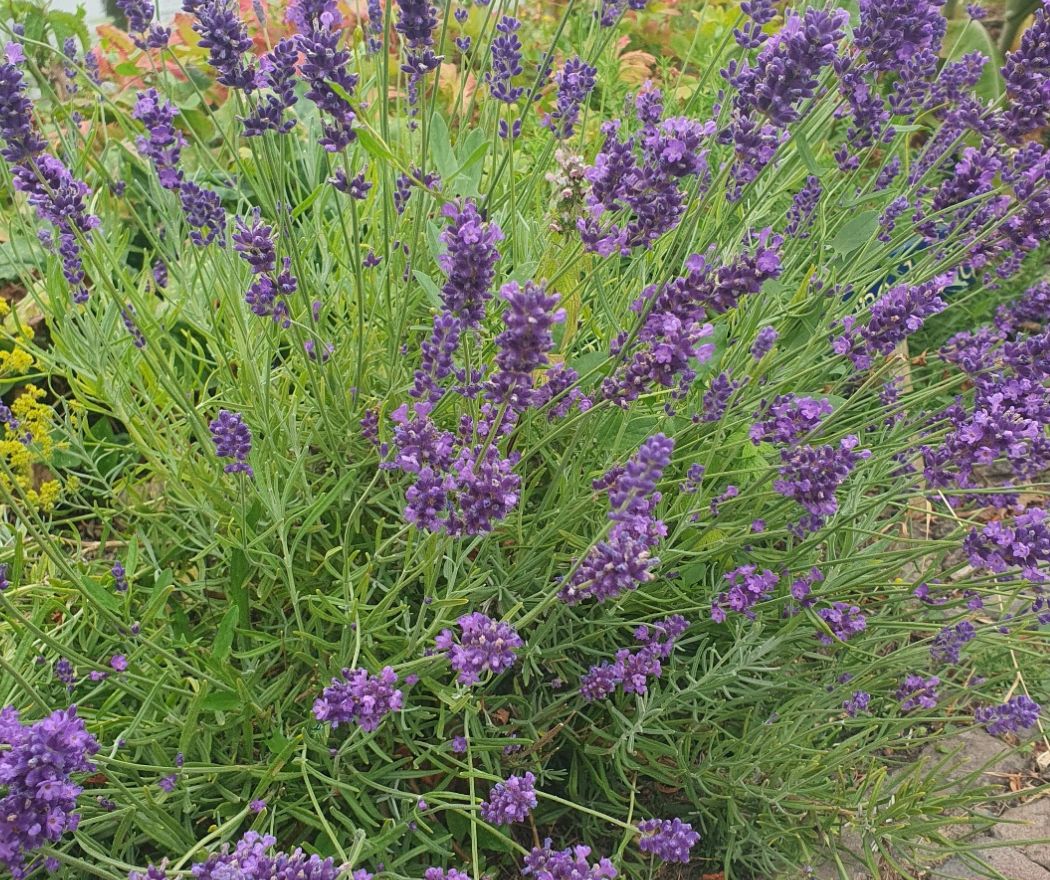
Lavender
LAVANDULA
The scent of lavender has a calming and relaxing effect. Lavender oil is therefore widely used as a fragrance in soap and perfume, as well as in aromatherapy. Bags with lavender grains in them were often placed in closets. This keeps clothes smelling wonderful and at the same time protects them from moths.
The famous medieval abbess Hildegard of Bingen recommended lavender in an elixir for coughs.
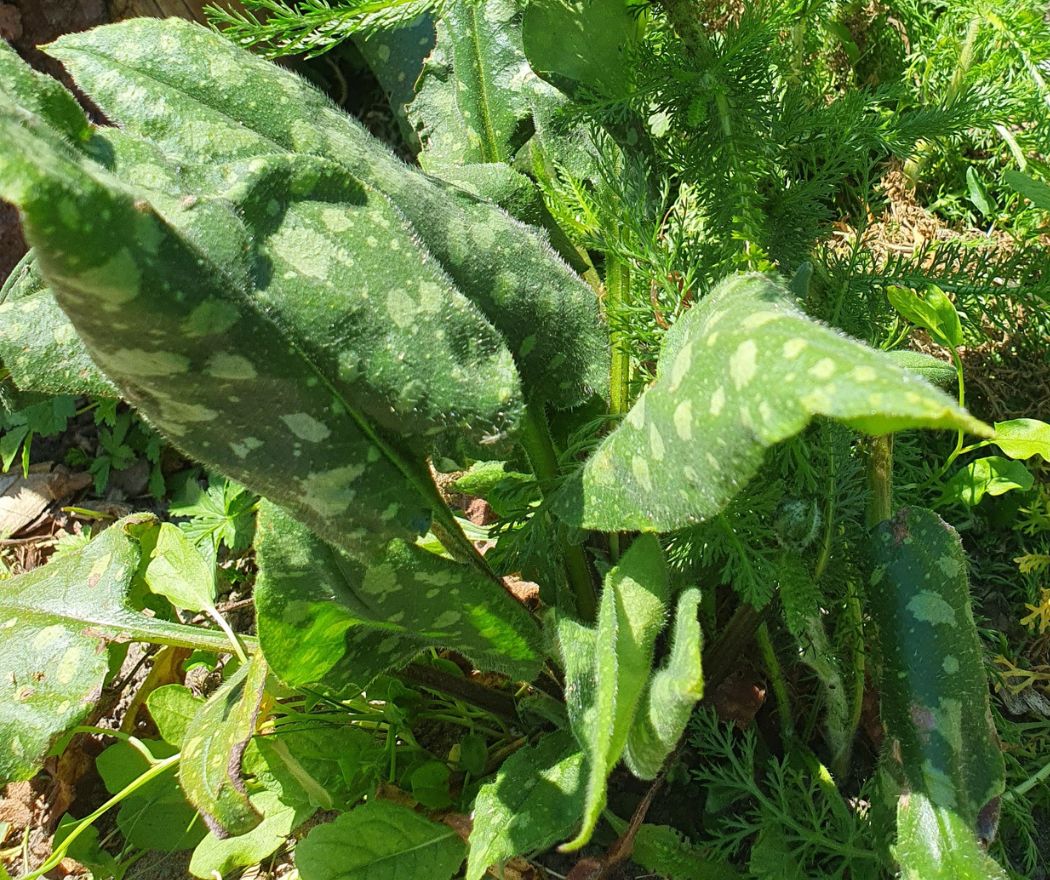
Lungwort, Spotted
PULMONARIA OFFICINALIS
The leaves of spotted lungwort have somewhat the egg-shaped shape of a lung, and the white spots on the leaves resemble lung alveoli. According to the theory of signature, external properties of an herb indicate its medicinal properties. Thus, the plant is good for the lungs.
Spotted lungwort helps against bronchitis, strengthens connective tissue, and helps against emphysema and hemoptysis. It acts soothing, expectorant and calms coughs. In addition, spotted lungwort drives off urine and sweat.

Milk Thistle
SILYBUM MARIANUM
Milk thistle is a plant mainly used to protect the liver from toxic substances and in liver disorders. Sylimarin (and derivative silybinin), a component of milk thistle, is known for its antioxidant and anti-inflammatory effects. This substance is extracted by pressing the oil from the seeds.
In addition, milk thistle used to be used as a vegetable. The young leaves can be eaten as a salad (just take off the spines). Cooked, the young rhizome is also edible as a vegetable.

Madder
RUBIA TINCTORUM
Originally madder comes from the Near and Middle East, and it was used in that region thousands of years ago. For example, in ancient Egypt and the Roman Empire: textiles dyed with madder have been found not only in Tutankhamun's tomb, but also in Pompeii.
In the Netherlands, madder was grown mainly in Zeeland from the fourteenth century. The plant has thick rhizomes and thin secondary roots. After three years, the roots were harvested and taken to madder stoves. Here they were dried and then pulverized.
At first the color was pale orange, but over the centuries several reactions were discovered that made the color more intense red. However, this often brought enormous pollution and odors: for example, sulfuric acid, aluminum hydrate or lime spar were used to change the color. Madder was used not only in the textile industry, but also by (art) painters. Then it was called Kraplak or Turkish Red, further it is also known as Alizarin.
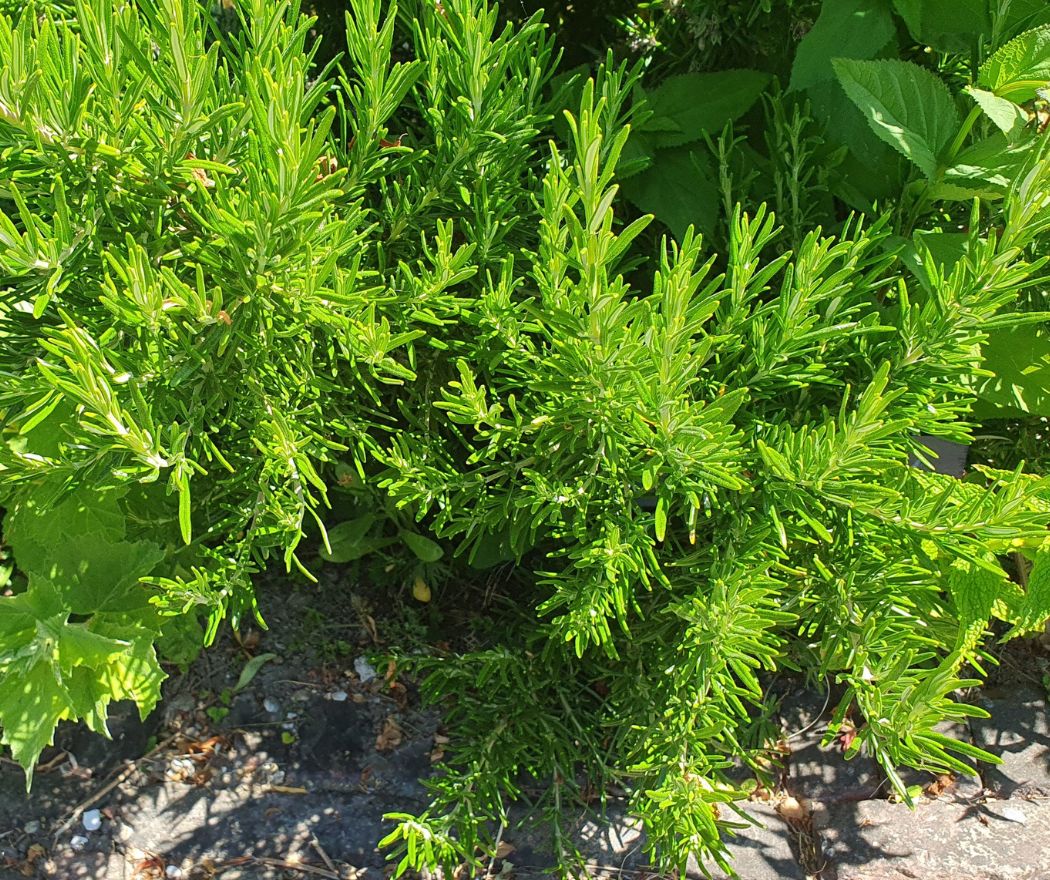
Rosemary
SALVIA ROSMARINUS
Rosemary has been used as a kind of miracle cure for all ills, physical and mental. It improves blood circulation, is good for your liver and kidneys, improves your digestion, helps against parasites and has a relieving effect on respiratory problems. In addition, it is good for your memory, helps against fatigue and is good for your mood.
To ingest it, it was incorporated into food, shredded or as a sprig, just as we still do today. Rosemary was also used as an herbal oil.
For refreshing the mind and for fatigue, an essential oil was made from it. It also came in handy when cleaning a room.

Sage
SALVIA OFFICINALIS
The Latin name of sage, salvia, comes from salvare, or health/healing. Sage is used for sore throats and inflamed tonsils and also for weak/irritated gums or sores in the mouth.
In addition, it is good for the intestines: it helps with cramps and gas, and it whets the appetite. Furthermore, sage cleanses the blood and strengthens the liver.
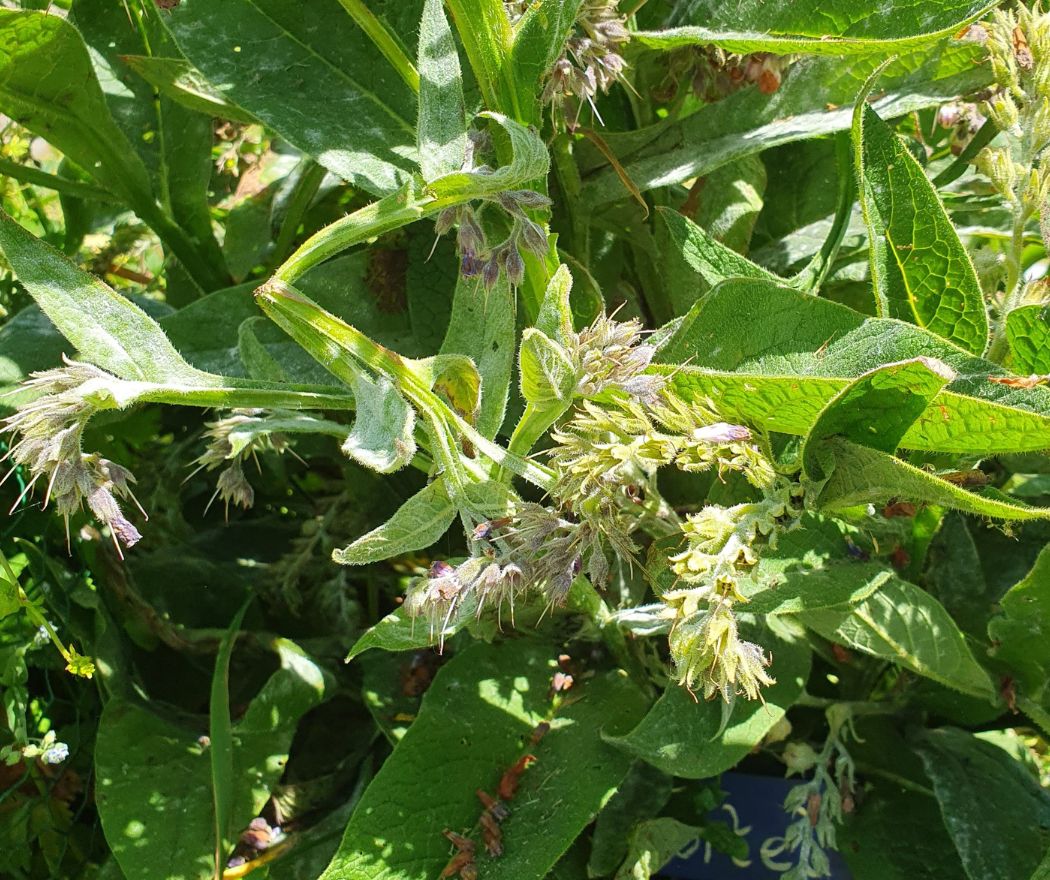
Comfrey
SYMPHYTUM OFFICINALE
Comfrey has traditionally been used to heal wounds and broken bones. It has since become clear from research how it works: the plant increases blood flow and promotes lymph flow, therefore parts are joined (more easily).
Furthermore, comfrey helps well with joint pain due to rheumatism, and sprains and muscle paralysis.

Foxglove
DIGITALIS PURPUREA
Foxglove is so toxic that you absolutely should not experiment with it yourself. Therefore, it was used very little in the Middle Ages. Foxglove contains digitalin which is good for improving heart function and against heart disorders. It was therefore used for heart problems and as a diuretic. But beware: too much digitalin paralyzes the heart.
In folklore, the flowers were seen as chairs for tired fairies. According to the story, the elves were said to have given the flowers magical powers as thanks. When animals, especially foxes, wore the flowers as gloves, they could use them to talk to each other silently.

Wineglass
RUTA GRAVEOLENS
Grapefruit can be used to promote menstruation, and improve sweating and gallbladder function. Because it stimulates the liver and bile, it has a positive effect on vision.
As a kitchen herb, it was and is widely used with fatty dishes because it promotes bile production. As a result, fat is digested better.

Wow
RESEDA LUTEOLA
Wouw has been used as a dye plant in Europe since prehistoric times. One of the areas where the plant was cultivated was the region around Aalst, in East Flanders.
Kew contains yellow dye. The greatest concentrations are in the tops of the sprouts and in the seeds. To release the dyes, the kite was first boiled in water with urine.
Upcoming activities
Spring Crafts
May 2, 2024

Want to get out and about during the May vacation? Come and enjoy crafting in the Knights' Hall at Radboud Castle! We have the spring jitters, so time to get to work. What pretty things will you make? Or would you rather do the scavenger hunt? Good news, because you can do both! Spring tinkering is included with the museum visit, as is the scavenger hunt.
Foodtruck Festival
May 5, 2024

The Foodtruck Festival is back! Once again this year, the castle square is one big open-air restaurant, how cozy is that? Sunday, May 5, you will find a wide range of foodtrucks with different cuisines. Entrance to the castle square is free. Plop down on the picnic blankets, hook up at the bar tables or take a seat on the terrace and enjoy together. Whatever you do, at least this Sunday you won't have to cook! PS Would you also like to visit the castle? The museum is open during the day, we recommend making reservations.
Lucettes
May 12, 2024
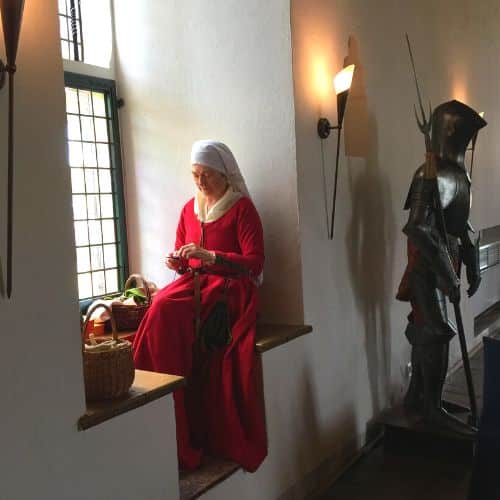
Would you like to do medieval crafts? Come Lucets at Radboud Castle! A lucet is a kind of fork with two prongs around which you wrap threads. You can compare it to punnicking. In the Middle Ages it was widely used to make coat fasteners. Lucets is included in the museum visit.
Reviews
The castle and its history. A fine place where you lose track of time. Check out the vacation activities! The Owl workshop today was fantastic!!!
- Berna Meijer
For ages I had planned to have a look and finally it came. Beautiful castle to wander around for a while and to enjoy the view from the battlements. Drank an excellent cappuccino in the museum café. Nice people who went out of their way to make my visit as pleasant as possible.
- Petra Vervoort


